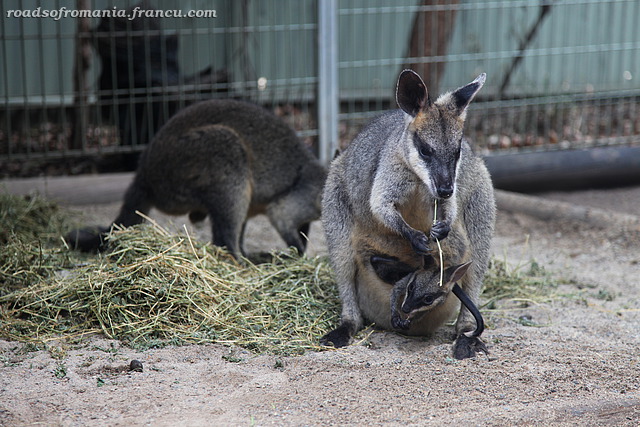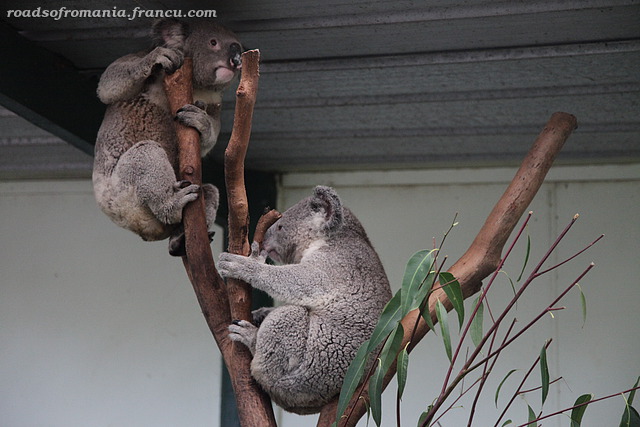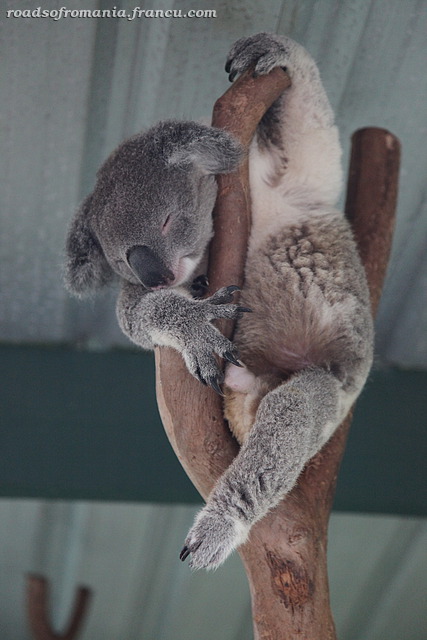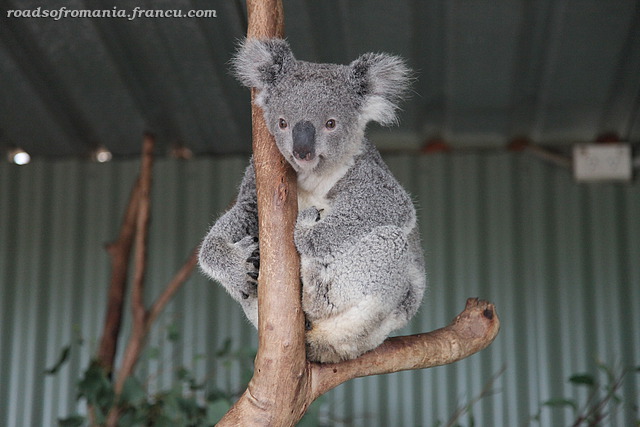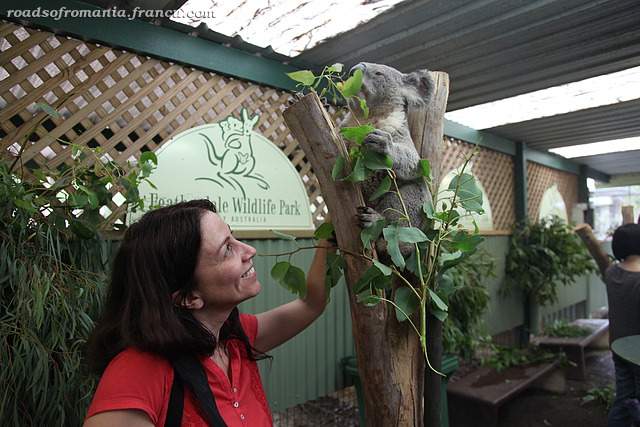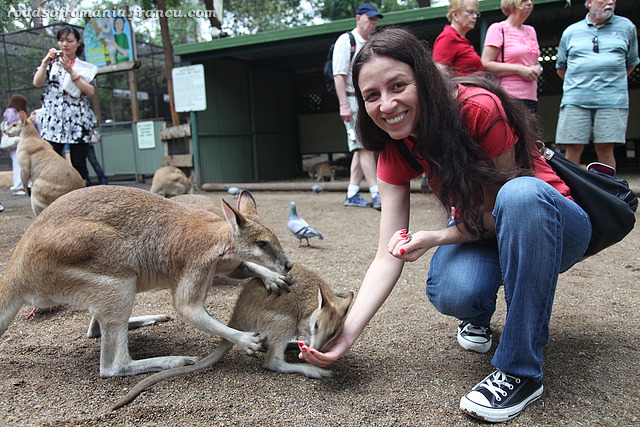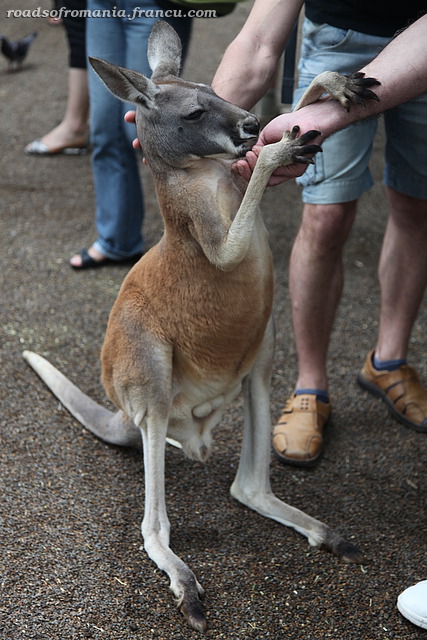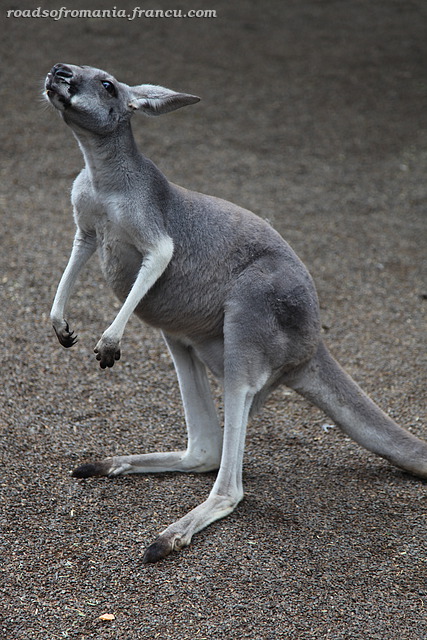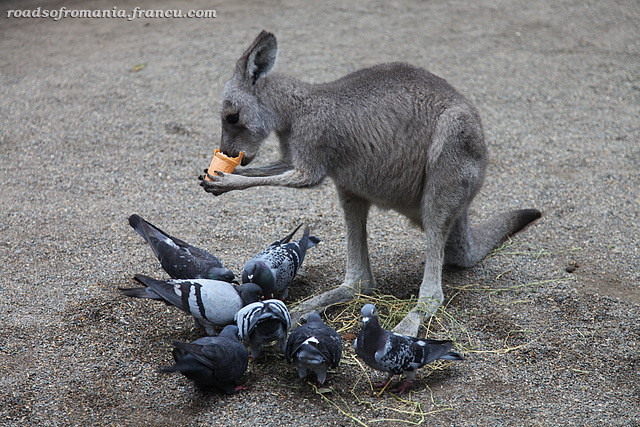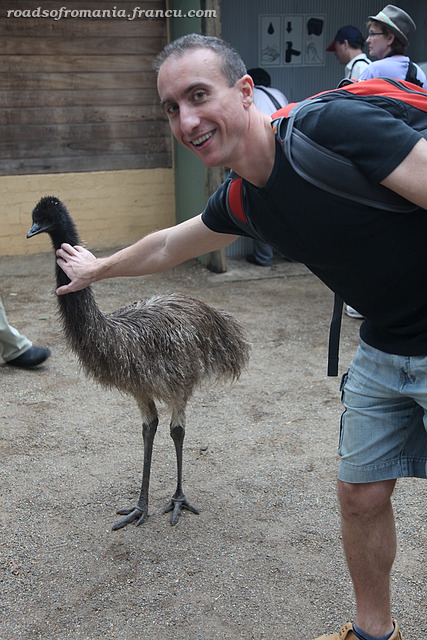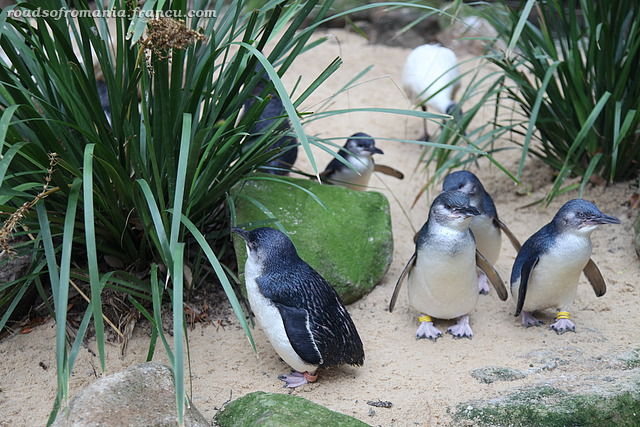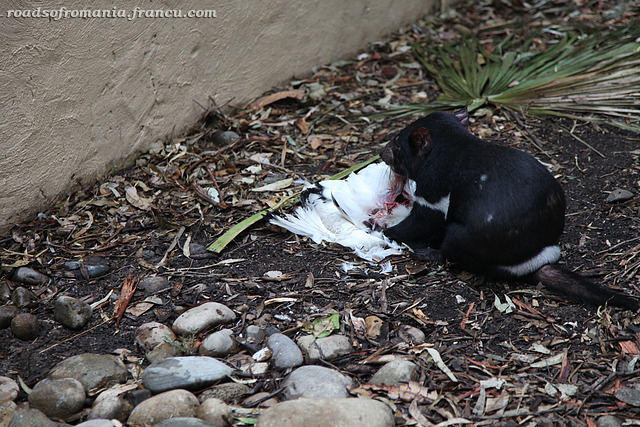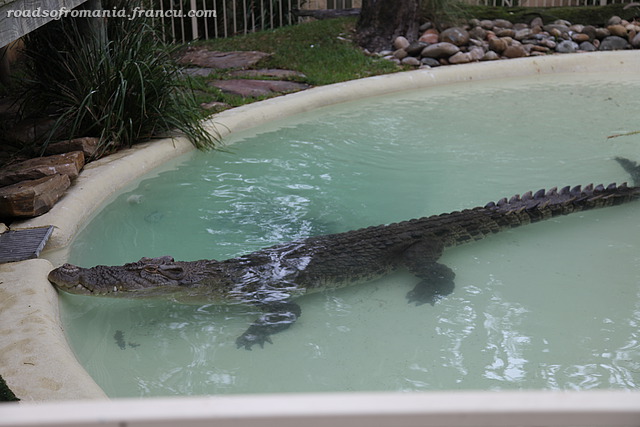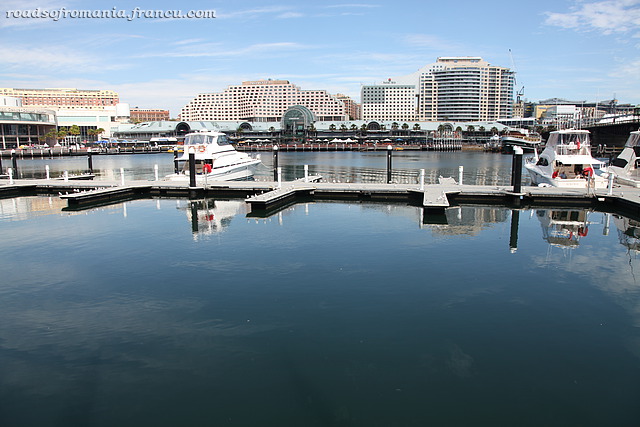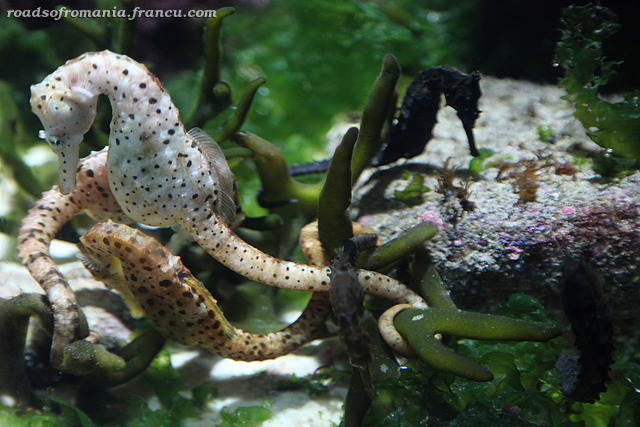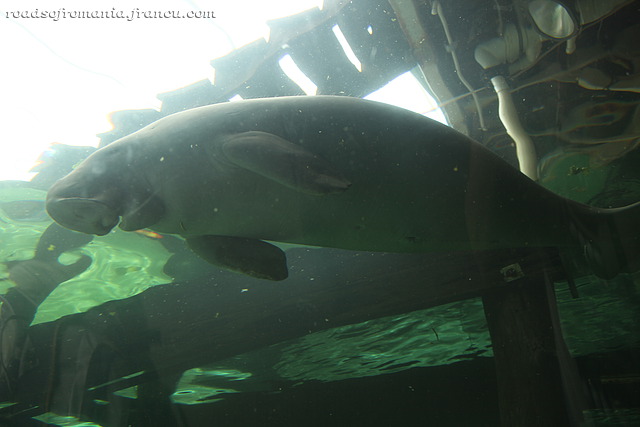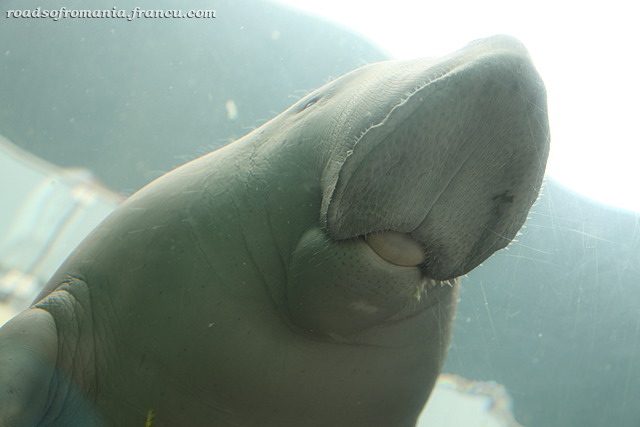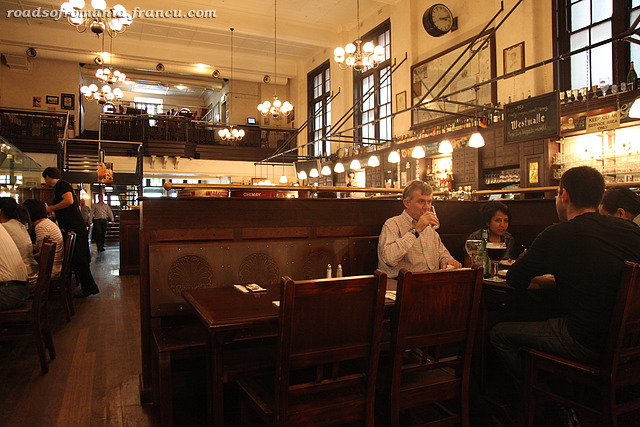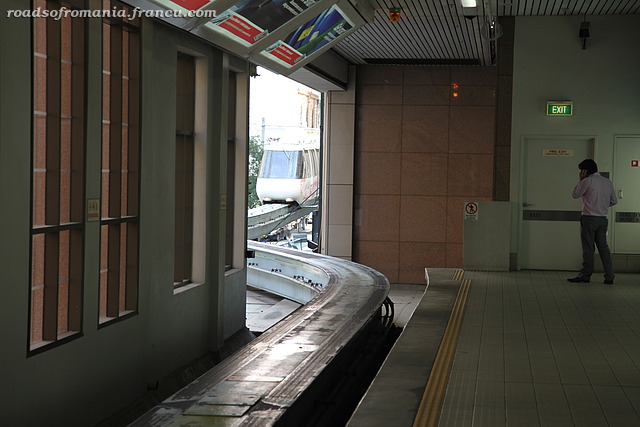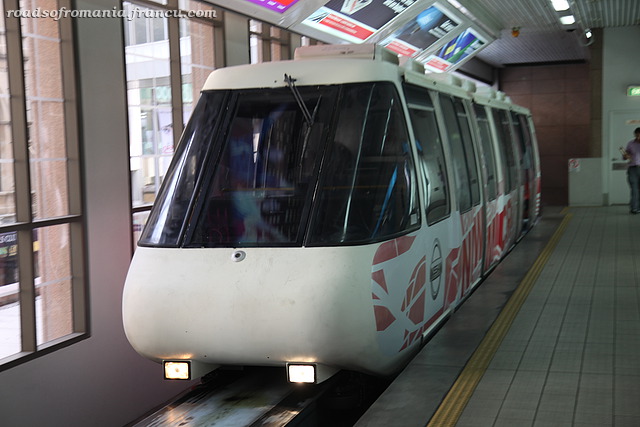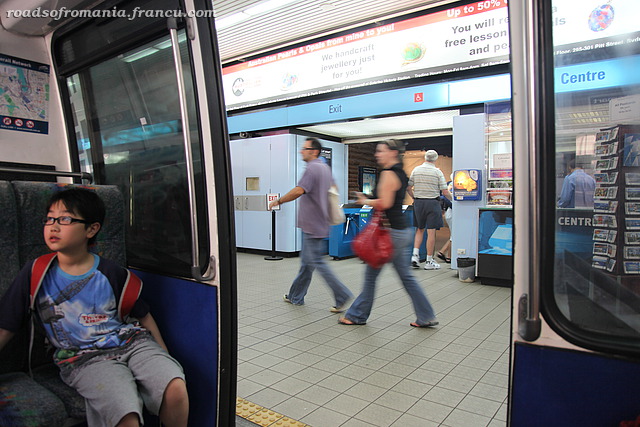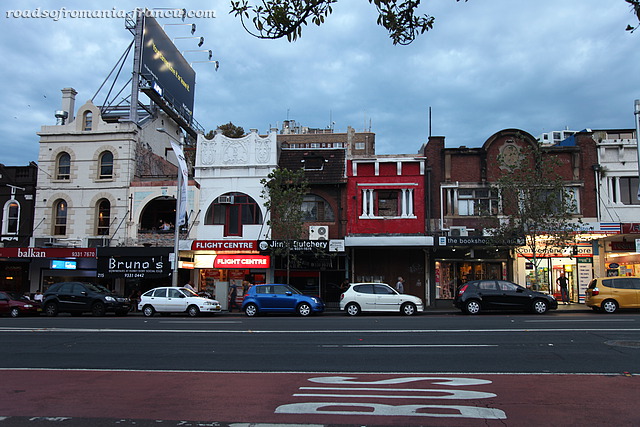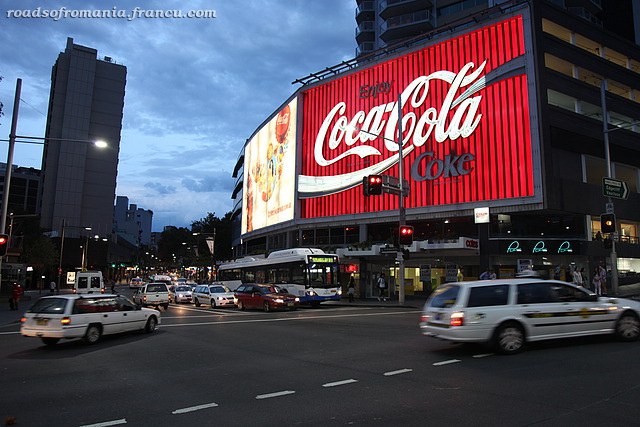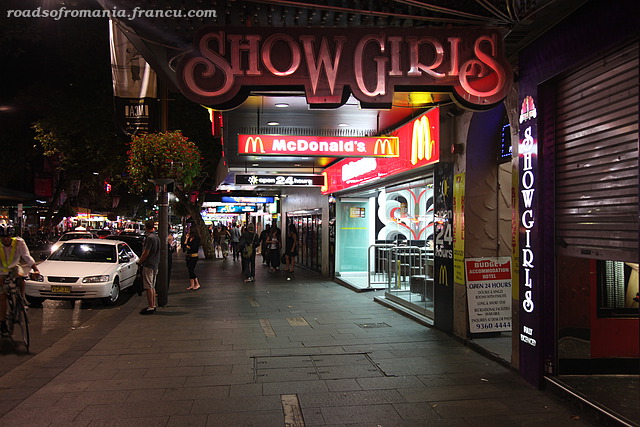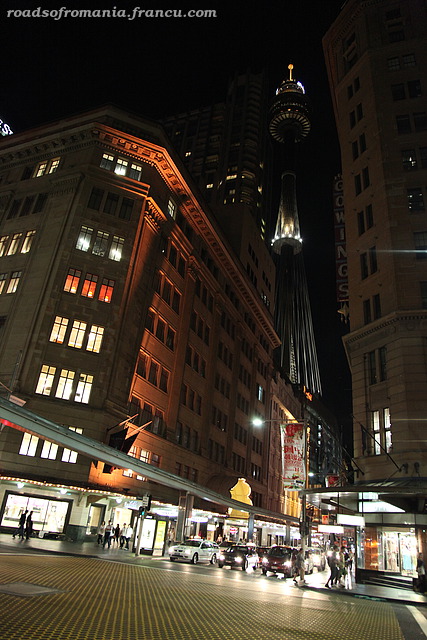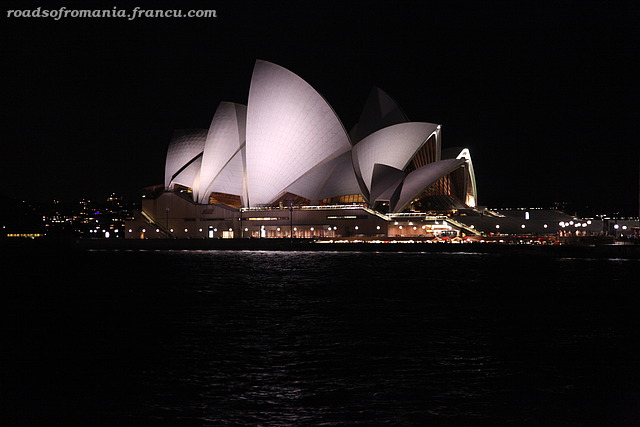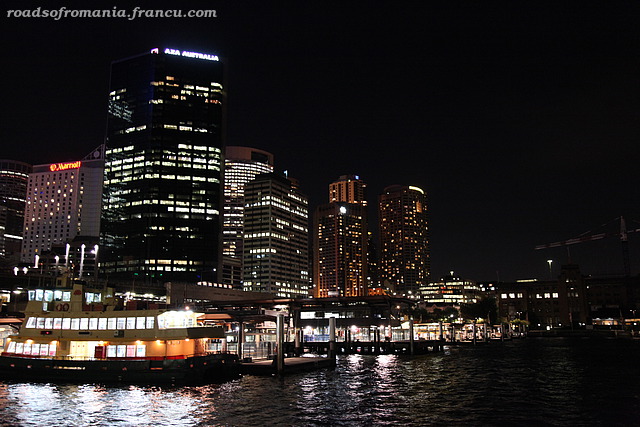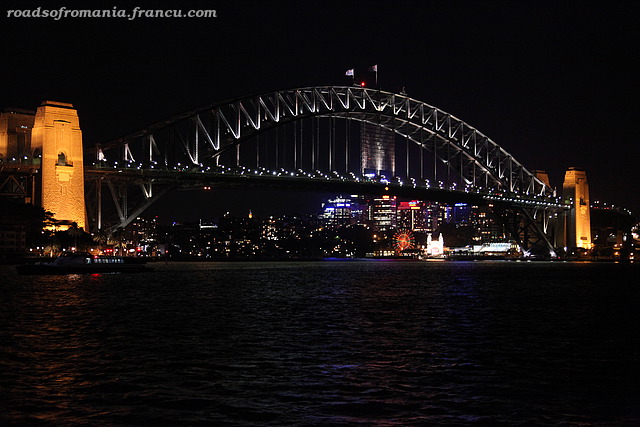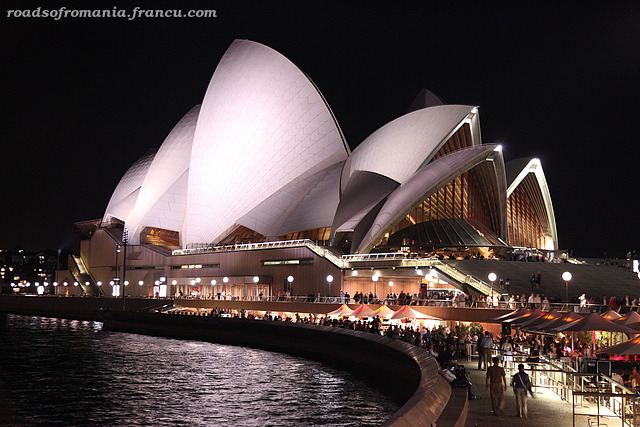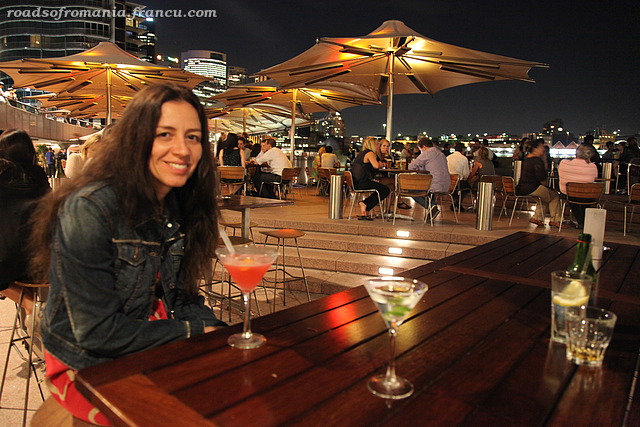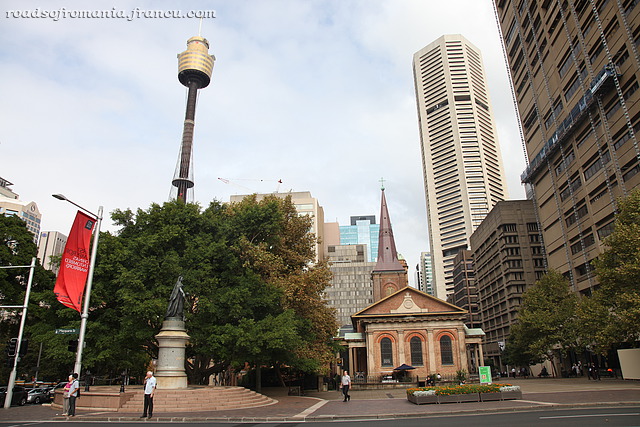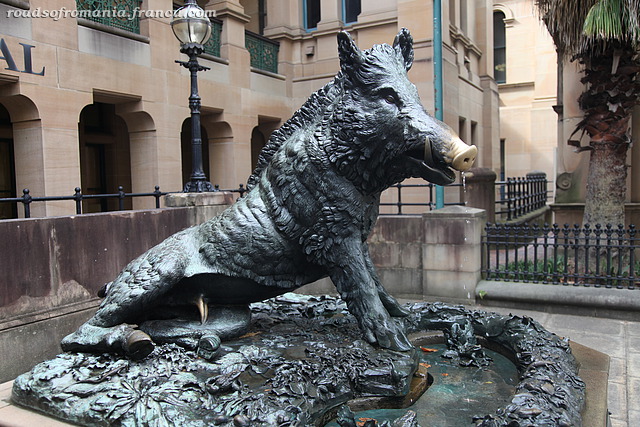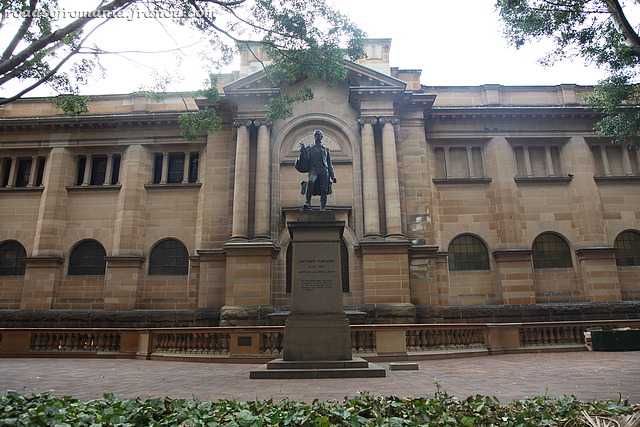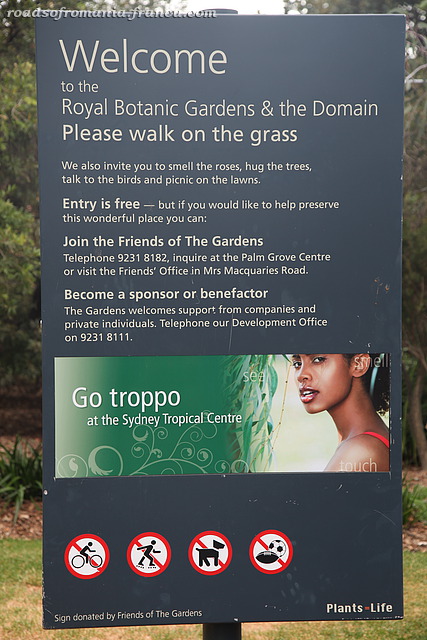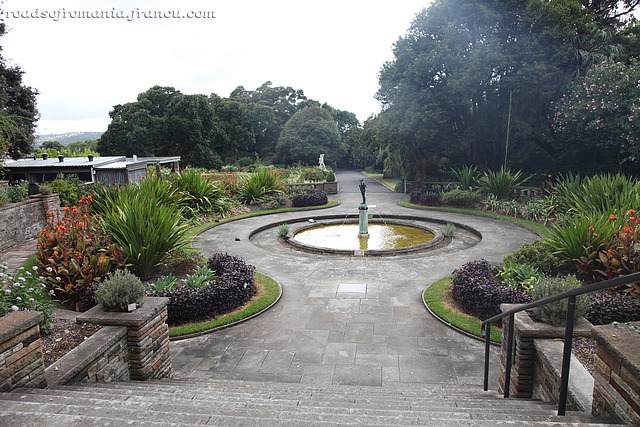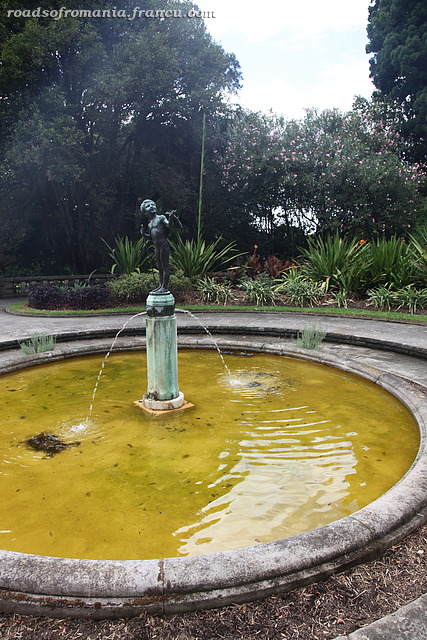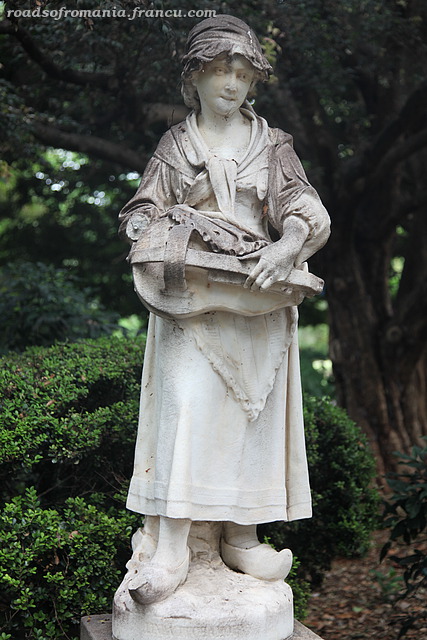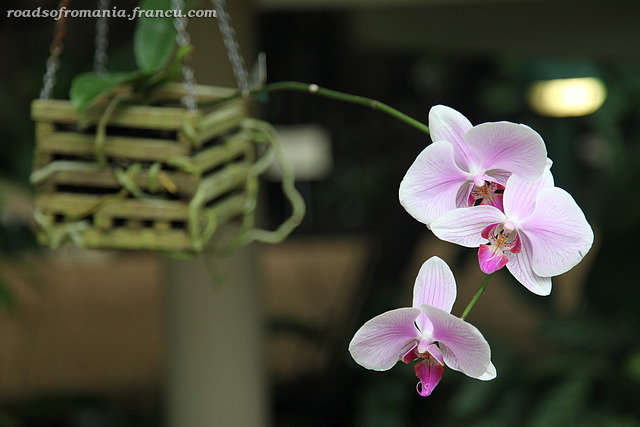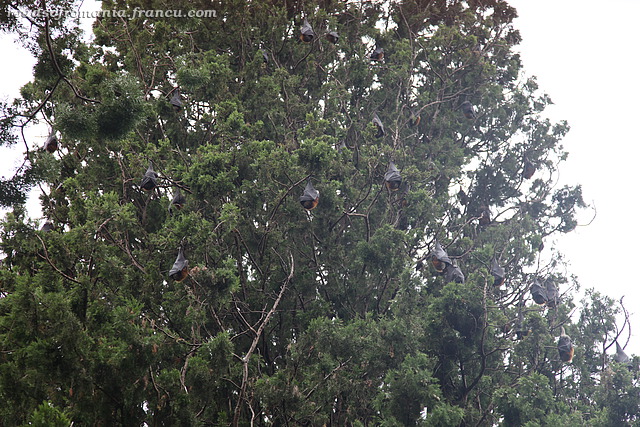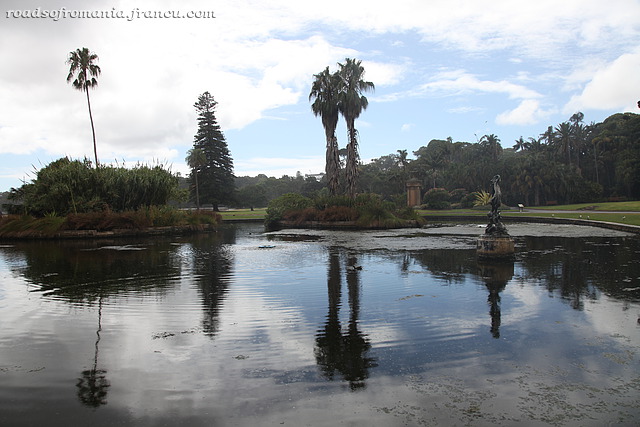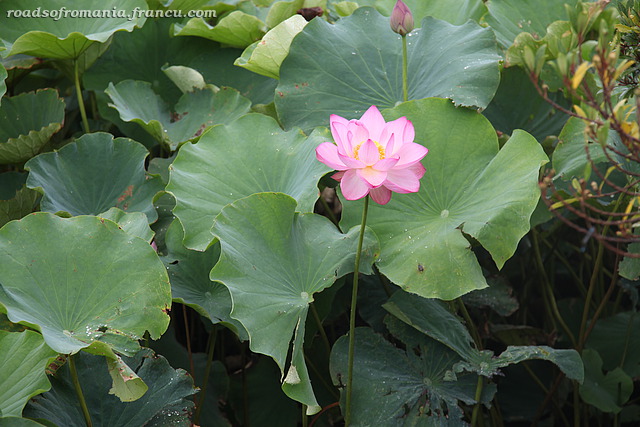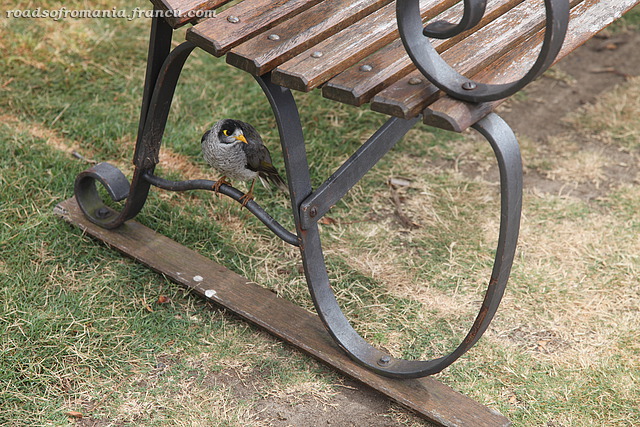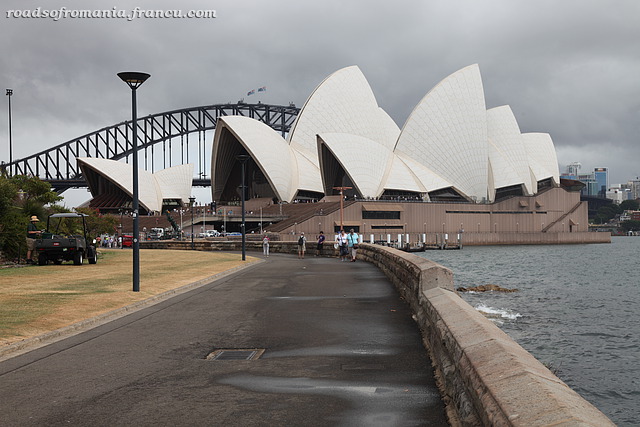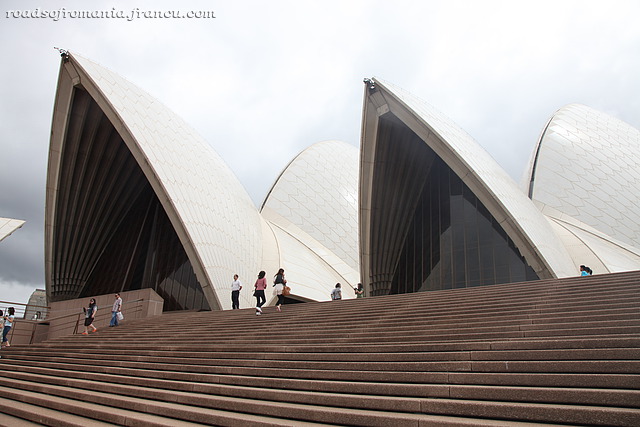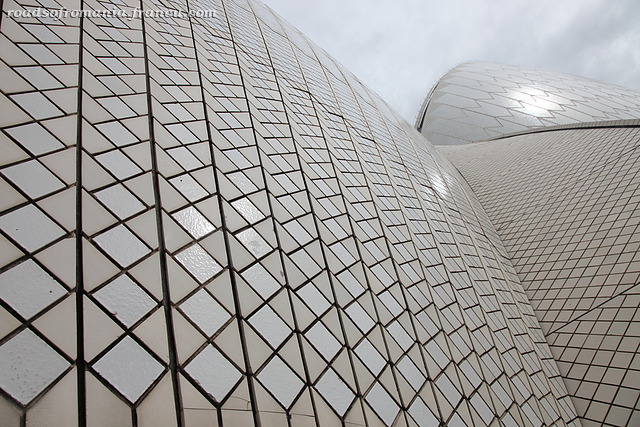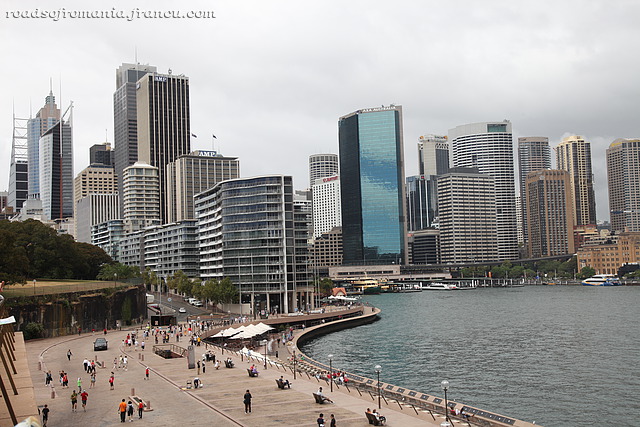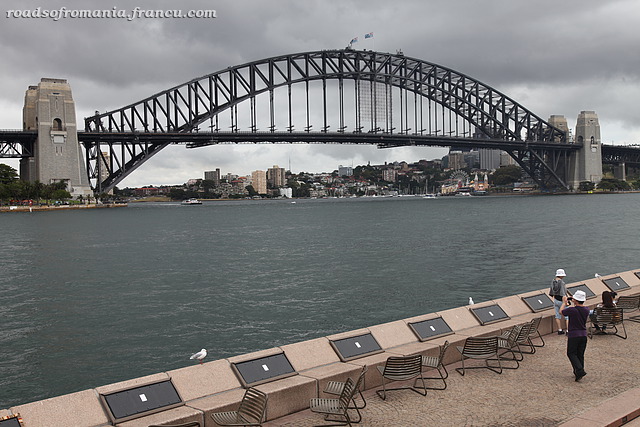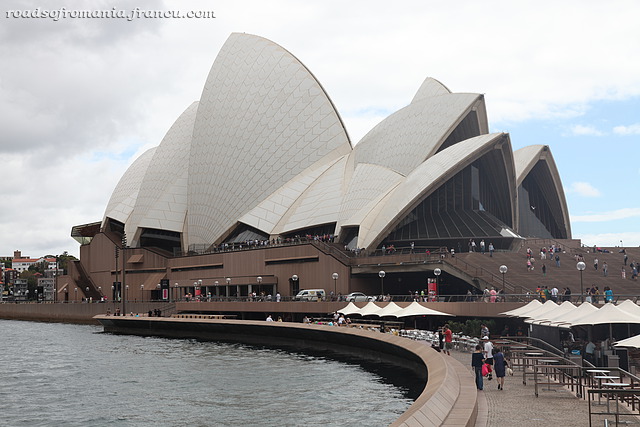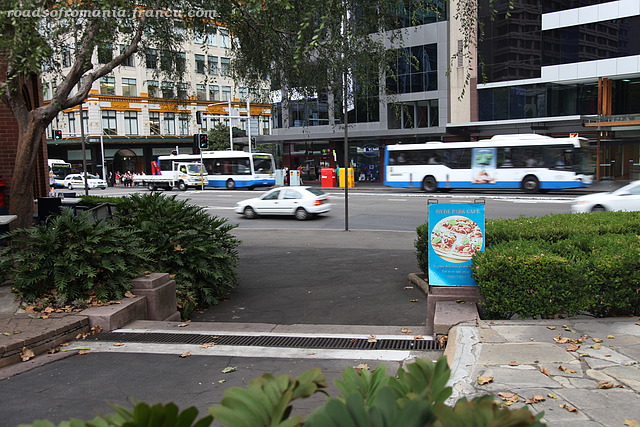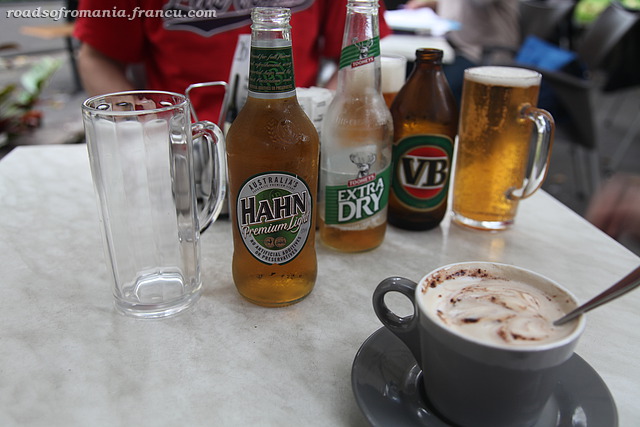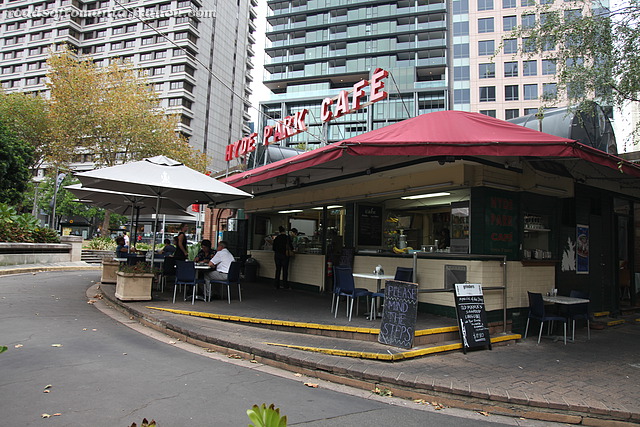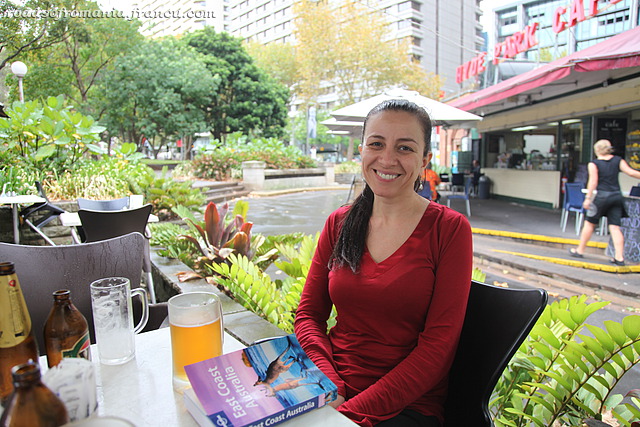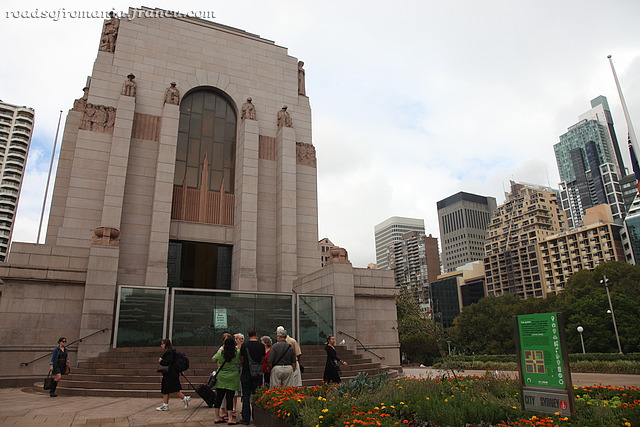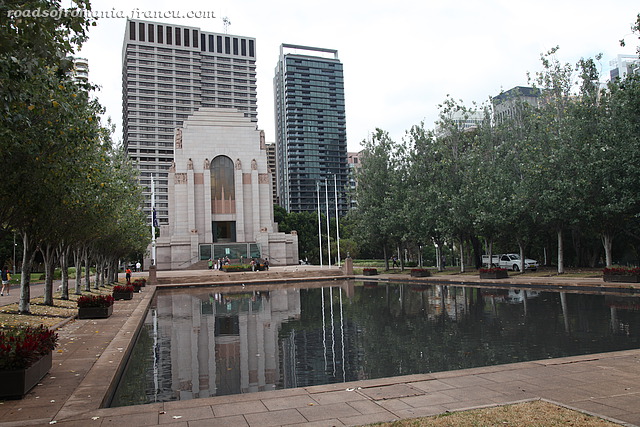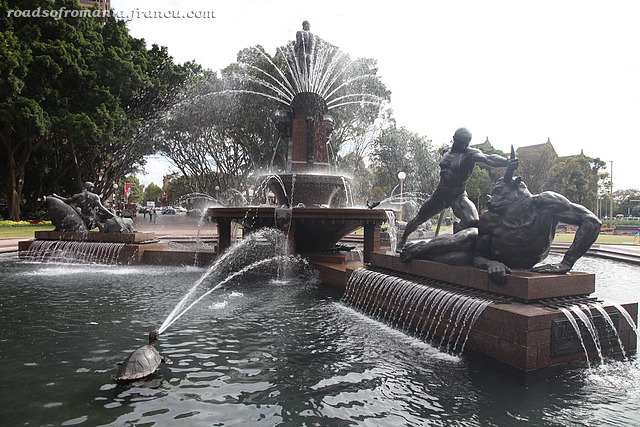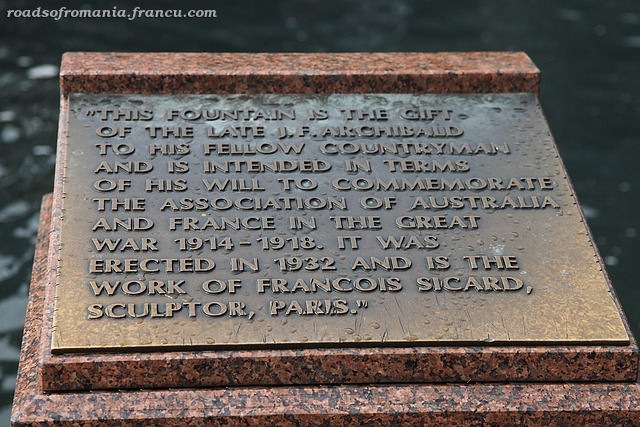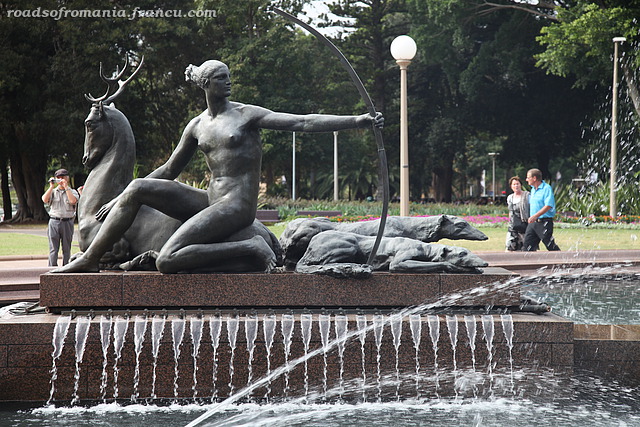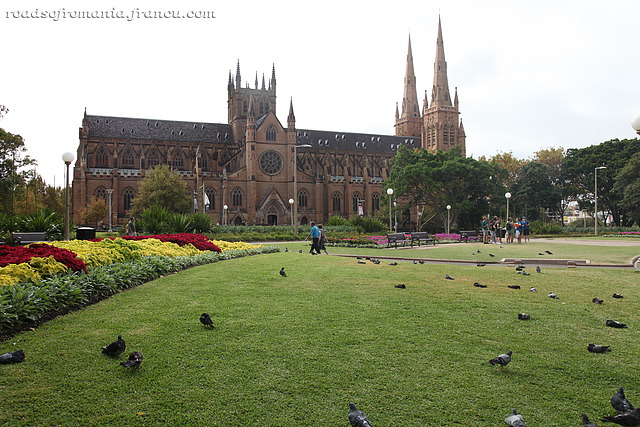Day Three
Trip to Blue Mountains
It’s the morning of the third day of our Australian vacation. It’s raining lightly as we leave Sydney headed for the Blue Mountains. The city seems deserted and it’s no wonder: it’s 8.00 o’clock in the morning on a Saturday. We’re riding in a small van with 13 other people (3 from Hong Kong, 2 from UK, 2 young Kiwis, 5 Canadians and 1 German) while Mark, the guide, is telling us stories about the history of Australia and the Blue Mountains. With only a few days budgeted for Sydney I decided to take a guided tour in order to see the Blue Mountains even though I’m usually not a big fan of guided tours. After reading numerous reviews on the web I decided to go with a company called Activity Tours. The day tour costs AU$92 per person which includes the Featherdale Wildlife Park Entrance, the National Park Entrance, a river cruise ticket, pick up from the hotel and a tiny koala souvenir.
We cross the Harbour Bridge and I look around admiring the view while Mark goes on with the history lesson. He asks if anyone can guess what non-indigenous animal has its largest population in the world in Australia. I guess rabbits. It’s not the correct answer but I get a laugh from Mark. The correct answer is – I wouldn’t have guessed it – camels! They were imported into Australia in the 19th century to be used for transport and construction in the colonization of the central and western parts of Australia. Motorized transport in the 20th century made the use of camels obsolete so they were released into the wild where they thrived and voila … according to this article on wikipedia at the present time they are “estimated to number more than 1,000,000, with the capability of doubling in number every nine years”, Australia having “the largest population of feral camels and the only herd of dromedary (one-humped) camels exhibiting wild behavior in the world”. Also “Live camels are exported to Saudi Arabia, the United Arab Emirates, Brunei and Malaysia, where disease-free wild camels are prized as a delicacy. Australia’s camels are also exported as breeding stock for Arab camel racing stables and for use in tourist venues in places such as the United States”. After that we hear a story about the wild horses and a few tidbits about the history of the continent. The suburbs of Sydney look very similar to Californian suburbs; low houses with a front porch and a small yard in front; no fences. Someone asks if we’re gonna see anything in this weather. Worst for Blue Mountains says Mark is when there’s no visibility. But trust me, I’ve been going up there for the last 9 years and it rarely happens that it’s foggy. But that’s how it is today, so either we’re that lucky or he’s lying to make us feel better 🙂
To recap some of the stories the guide told us, Australia was first sighted by the Dutch navigator Willem Janszoon in 1606 who charted the whole western and northern coastlines but made no attempt at settlement. He was followed by James Cook in 1770 who mapped the east coast of Australia, named it New South Wales and claimed for Great Britain. It was decided that these new territories will be used for the establishment of a penal colony and the first boat carrying convicts arrived on 26 January 1788, date which became Australia’s national day. The idea was that the colony would be self sufficient because they were a long way from everything but in the beginning they were dependent on supplies brought by ship. Mark also talked a bit about our destination, Blue Mountains, a mountainous area located about 50 kilometers west of Sydney. Before the arrival of the Europeans, these were inhabited by the Aboriginal and traces of their habitation can be found in many places in the area. After many attempts at crossing the Blue Mountains the Europeans finally succeeded in mapping a road in 1813.
Our first stop for the day is Featherdale, a wildlife park where you can see and feed native Australian animals. Koalas were kept in pens without meshes, screens or bars so it was easy to see them and take pictures. Most of them were sleeping. There is always one koala on “show” for people to pet and take close pictures with. Unfortunately we got to the park at the same time with another tour bus, one of the big ones, so it’s a long line to pet the koala. It takes about 10 minutes wait but finally I get to touch the cute marsupial. Its fur feels like that of a sheep, surprisingly scratchy. Next we buy some food and step into a big pen – wallabies, kangaroos, emus, all vying for the same meal. The wallabies were the friendliest I think. All the animals seemed in good health and used to the visitors. We spent most of our time at the zoo in this petting and feeding area, saving only the last 15 minutes before we were supposed to go back to the bus to see the rest of the park. We also saw some birds, penguins, wombats, a few cassowaries, dingoes, a crocodile and a Tasmanian devil on his lunch time. After an hour or so in the company of Australia’s amazing animals we get back on the bus to go on to our next stop.
